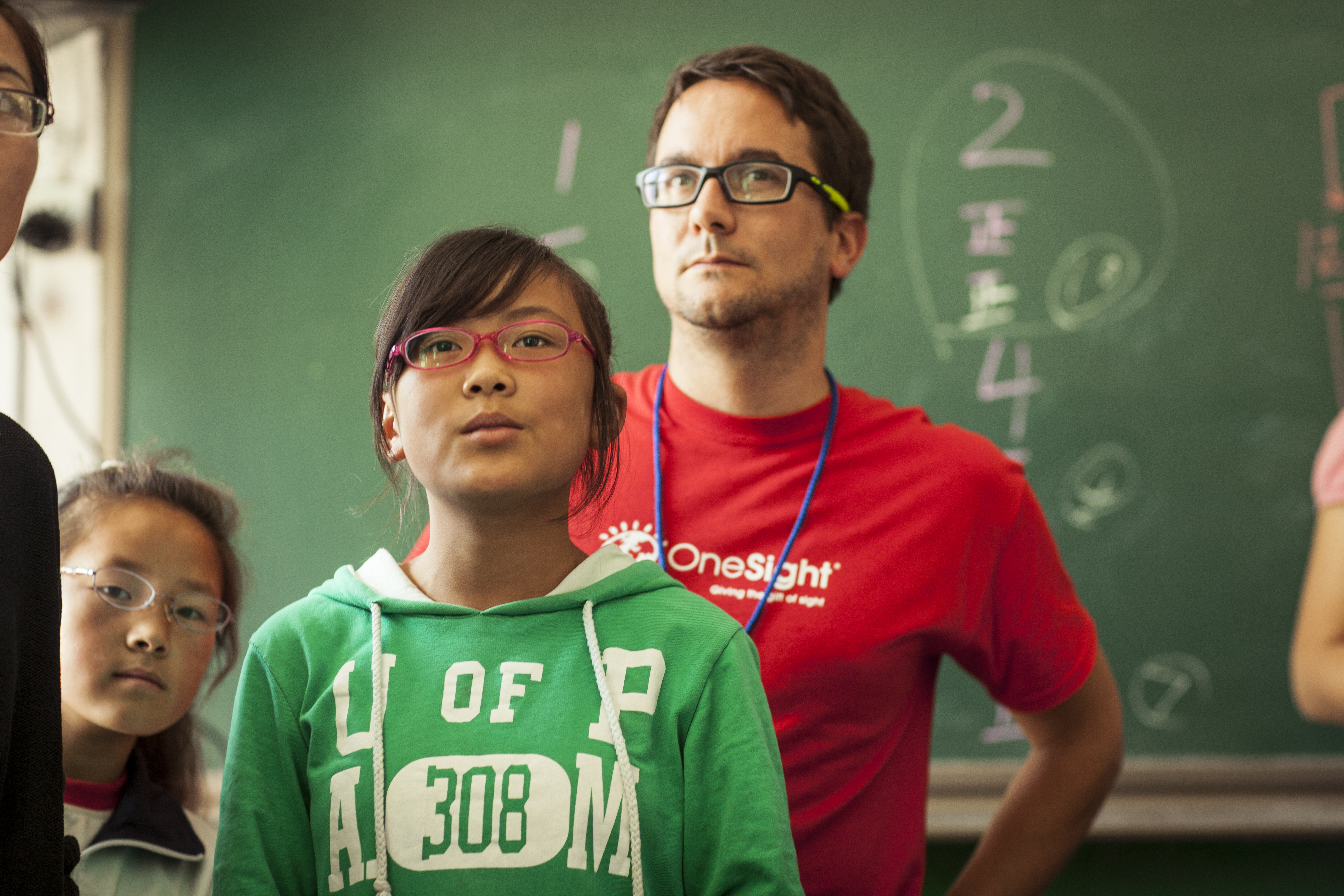REAP and OneSight: Vision Care for 7,000 Kids in 8 Days

by Hannah Myers
As the bus lurches up the pot-holed dirt road into the village, a storm of seventh- and eight-graders comes rushing out to meet it. This bus isn't taking them to class, but to a clinic that will revolutionize their school careers. They are travelling to a OneSight Vision Clinic. By the end of the day, they will have had their eyes examined, lenses edged, and frames selected for a brand new pair of eyeglasses. For these children, such a simple intervention can have a huge impact on their education and future.
Three years ago, REAP researchers noticed something surprising: in rural China, almost no children wear glasses. In response, REAP launched the Seeing is Learning program, and have screened over 30,000 children in a series of randomized controlled trials. REAP found that in a nine-month period, nearsighted students who were given glasses learned almost twice as much as those without them--putting them essentially a full grade-level ahead.
 |
Next, REAP and regional governments in China designed a scaleable sustainable vision care centers based in county hospitals. The vision centers target rural primary school students, and to date have provided new glasses to virtually all 3rd through 6th grade students who need them in two pilot counties.
But what about older rural students who need glasses, and whose schoolwork is suffering as a result? The REAP-supported vision care centers are already operating at capacity to meet the needs of primary school students. Therefore, from March 15th to 27th, OneSight—with support from REAP—operated a charitable clinic to provide vision care to all middle-school students in Yongshou county Shaanxi Province. The REAP team trained Yongshou's middle-school teachers to screen their students, then organized buses to transport students who failed the vision tests to the Onesight clinic in the county seat. OneSight's 65 volunteer optometrists and eye care specialists efficiently diagnosed each student, custom-ground lenses, and delivered a new pair of glasses. In total, approximately 7,000 students were screened and almost 3,500 received new glasses in the 12-day clinic.
In this remote corner of rural China, the group of foreigner eye doctors pulling up in a massive OneSight truck stocked with autorefractors, eye-dilating medicines, and enormous lens-grinding machines was certainly a sight to see. Local media captured much of the clinic, broadcasting it throughout Yongshou and surrounding areas. Moving forward, REAP plans to use this momentum to expand its sustainable vision care model into more counties across rural China.
Contacts
Matthew Boswell: Project Manager, Seeing is Learning (boswell@stanford.edu)
Scott Rozelle: REAP Co-Director (rozelle@stanford.edu)
